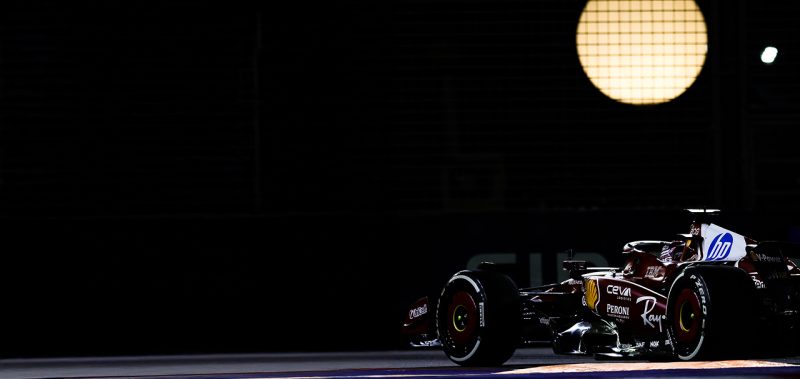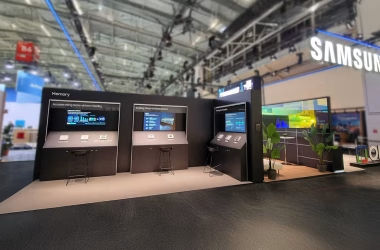You’re sitting in a packed auditorium. Lights down, screens up, a murmur of carbon-fiber nerds and data folks who secretly love lap charts. Let’s talk about how Formula 1 uses AI and machine learning—without the fluff, without the hype—because the best parts are slightly hidden: in the pit wall’s quiet confidence, inside a thousand simulations that never make TV, and in the tiny green checkmark that tells a race engineer, “Yes, do it now.”
Here’s the thing: modern F1 is awash in data. A single car carries roughly 300 sensors and streams more than a million telemetry points per second when it’s on track. That torrent fuels models, forecasts, performance maps, and human judgment that has to feel calm at 320 km/h. It’s both glamorous and gloriously mundane—just like good engineering.
The Data Firehose Everyone Pretends Isn’t Scary
People love lap times. Teams love time series. There’s car state (temperatures, pressures, ERS energy, fuel effects), track state (grip evolution, wind, surface temp), and “rival” state (who pitted, who’s backing up a stint). None of this is new. What’s new is how far the modeling has gone.
On race weekends, McLaren’s trackside rig handles a flood of telemetry and logs—about 1.5 TB over a weekend, according to their data partner—and keeps it flowing so the human beings with the headsets can steer the strategy without losing their minds. That plumbing matters, because a dropped stream isn’t just a tech issue; it’s a blown call on lap 43.
And what do you do with a firehose? You build models that make the invisible visible.
Strategy Engines: How Teams “Think” with AI
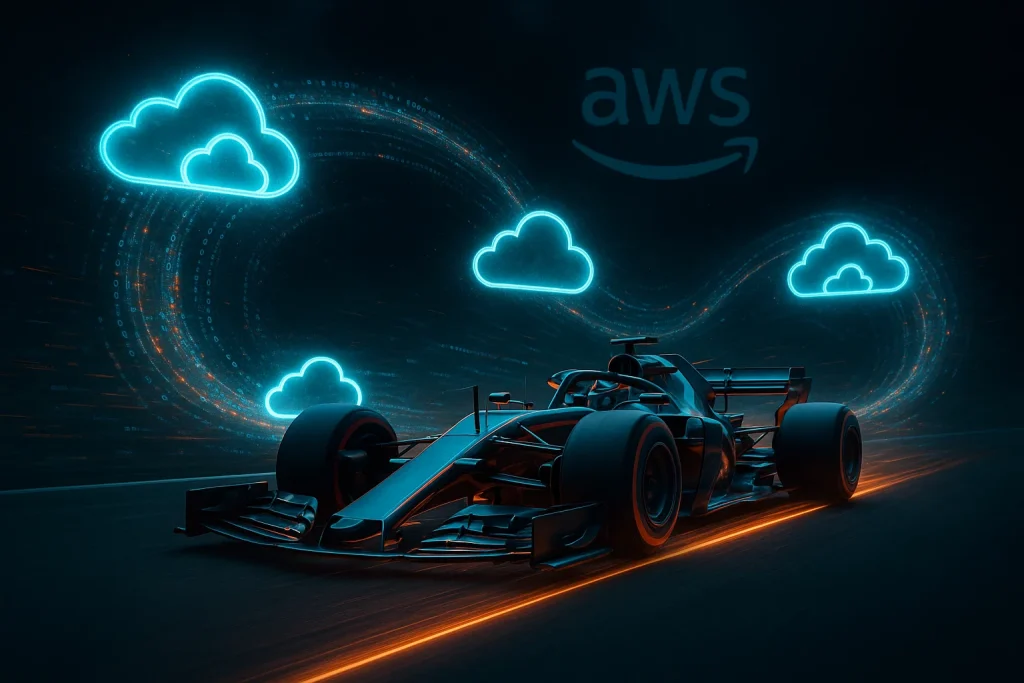
Let me explain it the simple way: race strategy is a giant branching story. “If we pit here, we come out behind him; if there’s a Safety Car, we get stuck in traffic; if the undercut works, we leapfrog two.” That story used to live in people’s heads and Excel. Now it lives in simulation farms.
Oracle Red Bull Racing runs Monte Carlo simulations on Oracle Cloud Infrastructure to explore millions—now billions—of race outcomes. The goal isn’t a single “right answer,” it’s a robust sense of which decisions are still good when chaos shows up. Oracle says the team boosted simulations by roughly 25% to sharpen predictions, and reporting around the Las Vegas weekend highlighted billions of scenarios to cover wild race conditions. When margins are tenths, more scenarios mean fewer surprises.
Mercedes, for its part, has long leaned on analytics tooling (TIBCO Spotfire and related stacks) to pre-compute scenarios—weather shifts, Safety Cars, accidents—so the pit wall can move from “we think” to “we know enough.” The numbers get brutal: millions of simulated worlds that feed human judgment, not replace it.
And yes, those models run mid-race. When the pit window opens and lap times start skating around, the computers don’t blink. People do—so the code steadies the hand.
The Fan Lens: Predictions on TV (and the Debate They Spark)
You’ve seen the graphics: “Pit Window,” “Undercut Threat,” “Overtake Difficulty,” “Braking Performance,” and the slightly controversial “Tyre Performance.” Those aren’t guesses slapped on a broadcast; they’re fed by historical data, real-time telemetry, and ML pipelines from the F1-AWS partnership, designed to translate pit-wall thinking into something a casual viewer can follow. As Rob Smedley put it, the point is giving fans an “insider’s view” into driver, car, and team decisions while the race unfolds.
Do people argue about accuracy? Absolutely. Some fans swear the tyre graphics lag reality or oversimplify wear. That criticism pops up often in community spaces, and you can see why: tyre degradation is messy, and drivers manage pace in ways a model can miss. But the underlying approach—learn from decades of data, stream current signals, estimate live—mirrors what teams do on the pit wall. The tension isn’t going away, and honestly, the debate makes the product better.
The Aero Pivot: When AI Meets a Wind Tunnel You Can’t See
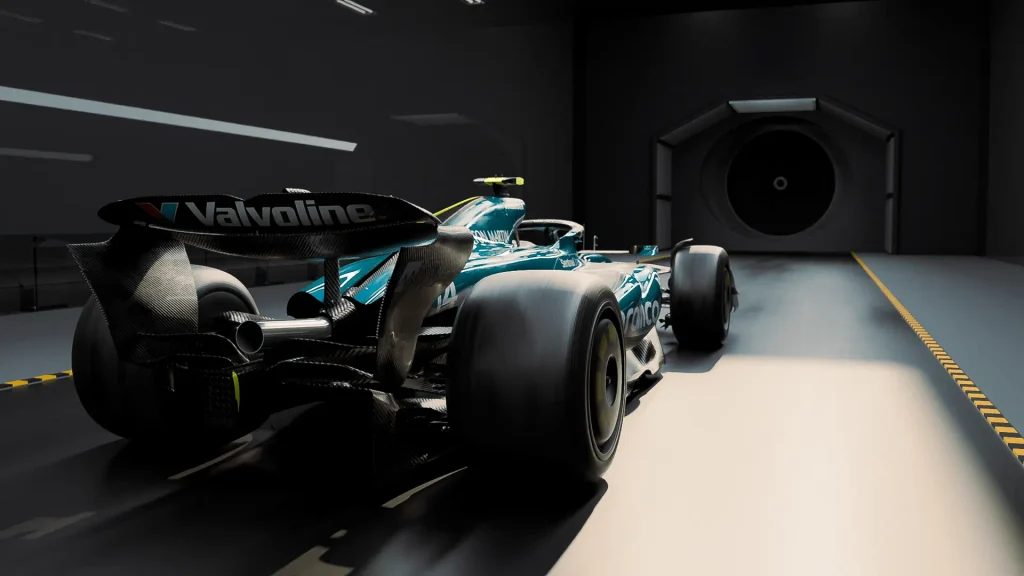
Remember the 2022 rules change, when the cars suddenly followed each other a bit closer? That wasn’t magic. Formula 1 and AWS ran massive CFD programs to tame “dirty air”—the turbulence that kills downforce for a trailing car. The scope was ridiculous: over 1,150 compute cores, simulations resolving roughly 550 million data points, and an 80% cut in turnaround time (about 60 hours down to ~12) to iterate designs quickly. That scale helped shape rules that encourage closer racing. It’s not just software; it’s policy engineered with code.
Articles around the project pegged the total compute at “hundreds of years” if you ran it on a single server—an eye-popping way to say, “We pushed CFD very, very far.” The point isn’t the number. The point is iterative speed: the ability to ask one more “what if” before a deadline.
Pit Stops: Teaching Machines to See the Milliseconds
Pit stops look chaotic. They’re choreographed. Ferraris’ engineers used to watch hours of multi-angle video to understand tiny delays—wheel guns, timing, positioning—and then cross-check by hand with telemetry. Now they’re modernizing the flow with AWS ML, using cloud tools to tag and analyze events, tie it back to car data, and learn from every stop without burning human hours. It’s industrial vision applied to motorsport, and it matters because two tenths in the box can swing track position more than a lap of raw pace.
You know what? This is the kind of “boring” AI I love. Not flashy. Just faster, clearer post-hoc insight that feeds the next decision.
Officiating Help: Track Limits and Computer Vision
We’ve all groaned at track-limits penalties decided minutes after the offense. The FIA tested computer-vision systems in Abu Dhabi 2023 to help flag potential breaches faster and train models that assist stewards in 2024 and beyond. It’s not about handing rulings to a machine; it’s about filtering the obvious cases so humans focus on the close calls. The more consistent the detection, the more racing we actually see.
What the Teams Actually Run: A Peek at Stacks
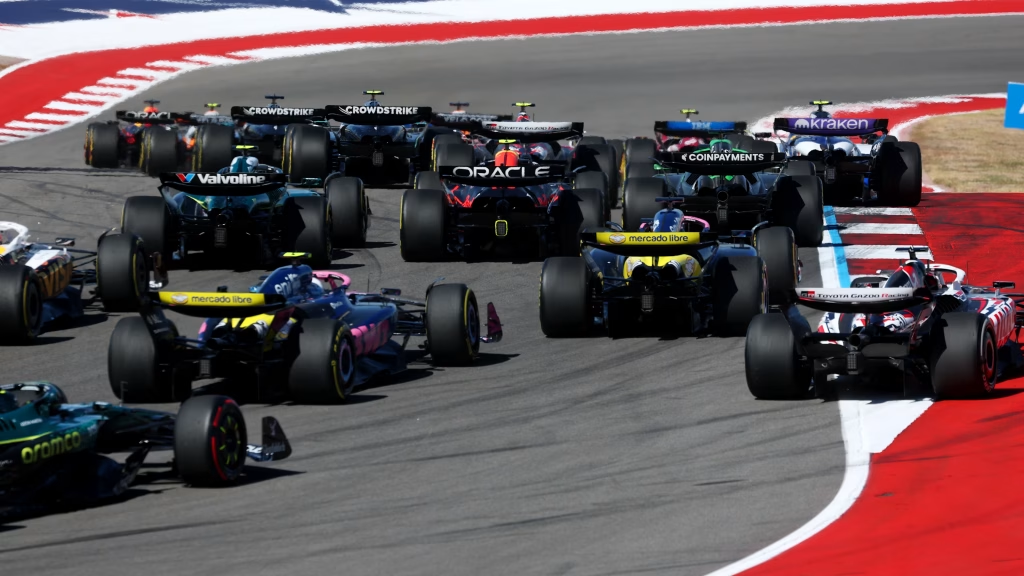
Let’s walk the paddock and peek under the hoods—not the cars, the data stacks.
- Oracle Red Bull Racing (OCI) — Cloud-based simulation farms, billions of scenarios for race strategy, and expanding use of AI around rules analysis and operations. Whether you love or hate the team, this stuff explains their confidence on wonky weekends. (Oracle)
- Scuderia Ferrari HP (AWS) — Beyond broadcast insights, Ferrari’s engineers have built a virtual ground-speed sensor with ML so they can reduce hardware weight while still getting accurate speed data. They’re also applying ML to streamline pit-stop analysis. Smart trade: shave grams of sensor mass; keep the signal. (Amazon Web Services, Inc.)
- Mercedes-AMG Petronas (TIBCO) — Heavy on simulation and data visualization; think millions of pre-built scenarios, then Spotfire dashboards to keep everyone aligned on the math (and the money, thanks to tools that also track cost-cap implications). Less drama, more clarity. (FutureIOT)
- McLaren (Splunk) — Reliability and visibility across that 1.5 TB weekend flood; keep the streams healthy so the models behave. It’s the thankless backbone of “go faster.” (Splunk)
- BWT Alpine (Microsoft Azure + KX) — A dedicated data-science platform to pull racing, testing, and manufacturing data into one place; real-time streaming analytics with KX for split-second calls. Think “factory to pit wall” as one continuous dataset. (Microsoft)
- Aston Martin (Cognizant) — Work on digital twins and AI-assisted decision support; the mood music is “help the engineers act on intuition, faster.” It’s a nice way to describe human-in-the-loop AI. (www.cognizant.com)
- Williams (JuliaHub / SciML) — Scientific machine learning for aero maps, virtual sensors, and tyre deformation modeling. It’s a hint that specialized math is drifting back into F1 analytics, beyond generic ML. (juliahub.com)
None of this says “robots drive now.” It says “better prep, better priors.”
Tyres: The Hardest Easy Problem
Tyres are where physics and psychology hang out together. Degradation depends on compound, fuel load, track temperature, driving style, traffic—the whole soup. That’s why the most heated fan debates focus here.
In the research world, you’ll see LSTMs, GRUs, and other deep models trained on timing and telemetry data to predict lap times or pit windows. Papers from 2024 onward compare architectures for lap-time forecasting and tyre strategy, showing promise but also limits when chaos enters the chat. It’s a perfect “AI + domain” story: good features, plus guardrails, beat raw horsepower.
Even student projects try to estimate tyre wear and “optimal pit lap,” but the best ones acknowledge what teams know: safety cars, weather pops, and driver management can swing everything. That’s why broadcast graphics can feel off—they’re probabilistic hints, not gospel.
Cost Caps, Smarter Tradeoffs
There’s a subtle reason AI spread across the paddock: money. With budget caps, you can’t just throw people at problems, nor can you run wind tunnels endlessly. Simulation—especially cheaper, elastic simulation in the cloud—lets teams explore ideas fast and shelve the bad ones early. Mercedes’ use of cost visualization and analytics to weigh engineering choices sits exactly here: good data gives you the courage to say “no” more often.
When AI Is the Student, Not the Boss
A quick confession: we love telling stories where AI “decides.” In F1, the savvier story is AI as an attentive assistant. Models suggest; people confirm or ignore. That’s true in broadcast (where a graphic frames the drama), in pit decisions (where Monte Carlo shows risk), in aerodynamics (where HPC narrows the field), and in safety/officiating (where vision helps flag, humans judge). When fans nitpick—fair!—they’re really asking for better calibration between model output and race reality. And that’s healthy.
Where It’s Going: 2026 and a Gentle GenAI
Two near-term currents will shape the next few seasons:
- Hybrid power units and new rules in 2026. Teams are already crunching mind-bending simulations around power deployment, energy harvesting, and chassis tradeoffs. Reports highlight Red Bull’s use of Oracle’s newer compute shapes for broader scenario coverage as they stand up their own powertrains. Expect more “systems-level” modeling where the car isn’t a car—it’s a coupled network.
- GenAI as glue, not guru. No one’s handing strategy to a chatbot. But natural-language layers that search regulations mid-race, summarize rival stints, or surface anomalous sensor patterns? That’s already peeking in. The trick is to keep provenance tight so engineers trust the synthesis. Teams calling this “freeing engineers for strategy” are telling on themselves: the busywork is real.
Meanwhile, the governance side—like AI-assisted track-limits detection—should get steadier. As models learn from edge cases, the weekend moves faster, and we spend less time doomscrolling “investigation after the race.” That’s a win for everyone.
Final Lap: Why This All Feels Human
F1’s AI story isn’t robots versus racers. It’s craft at speed. The algorithms are good at relentless counting—probabilities, wear rates, wake vortices measured in pixels and pascals. The humans are good at saying, “Not now,” or “He’s managing,” or “Let’s try the offset.” That marriage is why the paddock looks calm while our heart rates bounce.
And yes, every so often a model gets humbled by a gust of wind or a driver’s stubborn tyre whispering. Good. Keeps us honest.
If you’re building AI anywhere else—finance, logistics, games—you can steal this approach with a clear conscience: pour your effort into clean streams, rich simulation, and tools that make experts feel sharper, not second-guessed. Then measure the tiny wins, and keep iterating. You might not have a podium, but you’ll know when you nailed a decision on your own lap 43.




